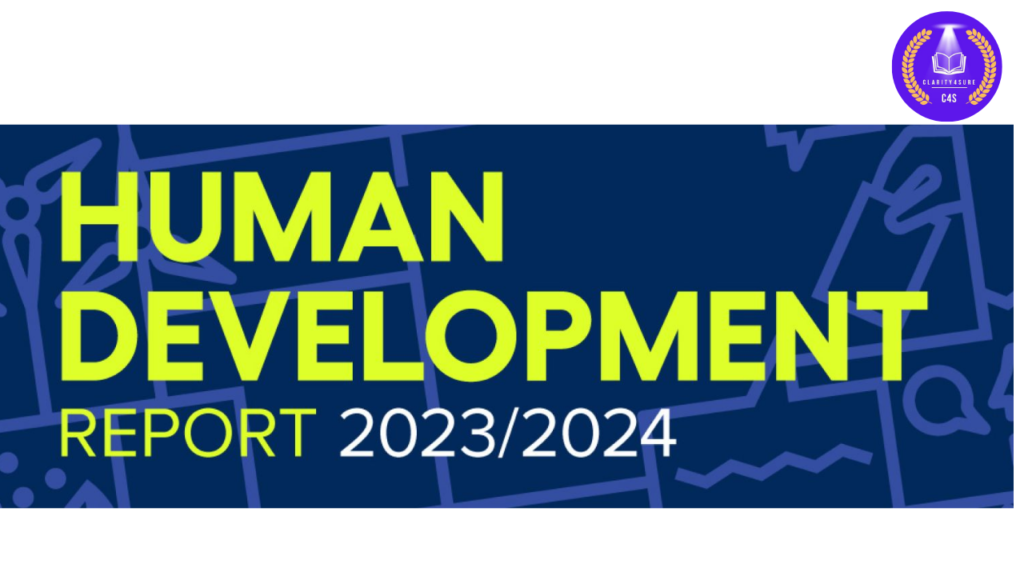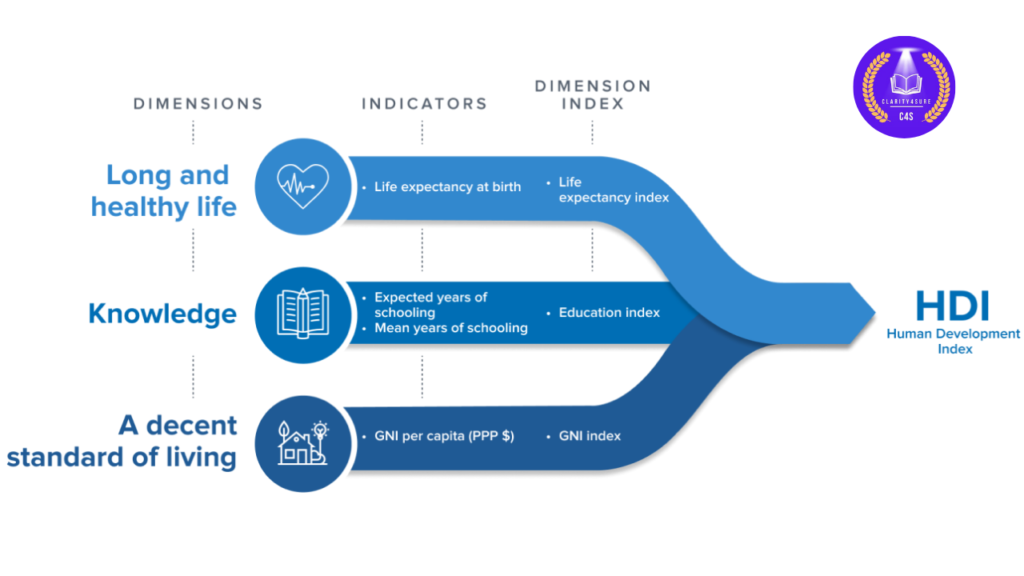
Why in News?
According to the 2023-24 Human Development Report (HDR), titled ‘Breaking the Gridlock: Reimagining Cooperation in a Polarised World,’ India ranks 134 on the global Human Development Index (HDI). Switzerland has been ranked number one.
- The report has been released by the United Nations Development Programme (UNDP).
What is the Human Development Report ?
- About:
- Human Development Reports (HDRs) have been released since 1990 and have explored different themes through the human development approach.
- The reports are produced by the Human Development Report Office for the United Nations Development Programme (UNDP).
- Human Development Index:
- HDI is a composite index that measures average achievement in human development taking into account three indicators:
- Life expectancy at birth (Sustainable Development Goal (SDG) 3),
- Expected years of schooling (SDG 4.3),
- Mean years of schooling (SDG 4.4)
- Gross national income (GNI) (SDG 8.5)
- HDI is a composite index that measures average achievement in human development taking into account three indicators:

Key Highlights of the Report
- Theme of the report:
- Recently released 2023/24 Human Development Report (HDR) was titled as “Breaking the Gridlock: Reimagining Cooperation in a Polarized World.”
- India’s ranking:
- India ranked 135 in 2021. It had moved up to 134 in 2022.
- India in the medium human development category:
- Between 1990 and 2022, the country saw its HDI value increase by 48.4 percent, from 0.434 in 1990 to 644 in 2022.
- India’s performance on various indicators:
- India’s life expectancy at birth has slightly improved from 67.2 years in 2021 to 67.7 years in 2022.
- There is an overall increase (5.88%) in expected years of schooling (EYS) from 11.9 years to 12.6 years, leading to an improvement of 18 places.
- Gross National Income (GNI) per capita also improved from $6,542 to $6,951.
- Performance of India’s neighborhood:
- Sri Lanka has been ranked much ahead at 78, while China is ranked 75, both categorised under the High Human Development category.
- Bhutan stands at 125 and Bangladesh at 129th position.
- Nepal (146) and Pakistan (164) have been ranked lower than India.
- India’s progress in reducing gender inequality:
- India has also shown progress in reducing gender inequality and ranks 108 out of 166 countries in the Gender Inequality Index (GII) 2022.
- The GII measures gender inequalities in three key dimensions – reproductive health, empowerment, and labour market.
- The country’s GII value of 0.437 is better than the global average of 0.462 and the South Asian average of 0.478.
- India’s performance in reproductive health is better than other countries in the medium human development group or South Asia.
- India’s adolescent birth rate in 2022 was 16.3 (births per 1,000 women ages 15-19), an improvement from 17.1 in 2021.
- However, India also has one of the largest gender gaps in the labor force participation rate—a 47.8 percentage points difference between women (28.3%) and men (76.1%).
Indian Overview
- Performance at Various Indicators:
- India’s average life expectancy reached 67.7 years in 2022, up from 62.7 years the previous year.
- India’s Gross National Income (GNI) per capita has surged to USD 6951, marking a 6.3% increase over the span of 12 months.
- There is a rise in expected years of schooling, reaching 12.6 per individual.
- India’s average life expectancy reached 67.7 years in 2022, up from 62.7 years the previous year.
- HDI Score:
- India attained an HDI score of 0.644 in 2022, positioning it at 134 out of 193 countries in the UN’s 2023-24 report.
- This categorises India under ‘medium human development.’
- With India’s HDI in 1990 standing at 0.434, the 2022 score reflects a positive change of 48.4%.
- India attained an HDI score of 0.644 in 2022, positioning it at 134 out of 193 countries in the UN’s 2023-24 report.
- Notable Achievements:
- There is a 9.1-year increase in life expectancy at birth, a rise of 4.6 years in expected years of schooling, and an increase of 3.8 years in mean years of schooling.
- India’s strides in reducing gender inequality, highlighted a Gender Inequality Index (GII) of 0.437, surpassing the global average.
- On the GII 2022 list, which evaluates countries based on reproductive health, empowerment, and labour market participation, India ranks 108 out of 166 nations in 2022.
- India’s strides in reducing gender inequality, highlighted a Gender Inequality Index (GII) of 0.437, surpassing the global average.
- There is a 9.1-year increase in life expectancy at birth, a rise of 4.6 years in expected years of schooling, and an increase of 3.8 years in mean years of schooling.
Observations made by Human Development Index
- Reducing Inequalities:
- The report shows that the two-decade trend of steadily reducing inequalities between wealthy and poor nations is now in reverse.
- Erodes trust in people:
- The failure of collective action to advance action on climate change, digitalisation or poverty and inequality not only hinders human development but also worsens polarisation and further erodes trust in people and institutions worldwide.
- Bypassing Fundamental Rules:
- Nine in 10 people worldwide endorse democracy, but over half of the respondents expressed support for leaders who may undermine it, for instance, by bypassing fundamental rules of the democratic process.
- Political Polarisation:
- Political polarisation in countries is also responsible for protectionist or inward-turning policy approaches.
Four Areas for Immediate Action proposed by the Human Development Report
- To break through the current deadlock & reignite a commitment to a shared future:
- planetary public goods for climate stability as we confront the unprecedented challenges of the Anthropocene;
- digital global public goods for greater equity in harnessing new technologies for equitable human development;
- new and expanded financial mechanisms, including a novel track in international cooperation that complements humanitarian assistance and traditional development aid to low-income countries; and
- dialling down political polarization through new governance approaches focused on enhancing people’s voices in deliberation and tackling misinformation.



















